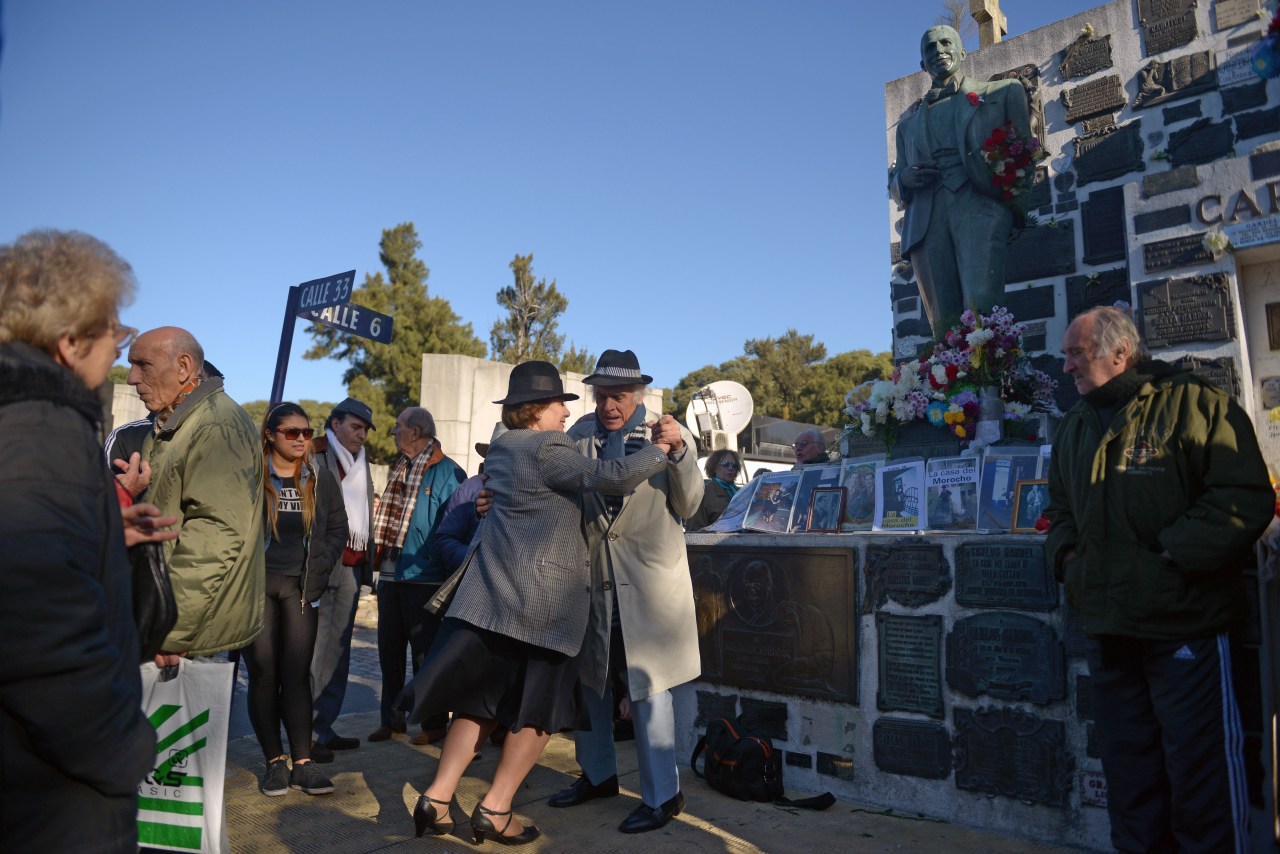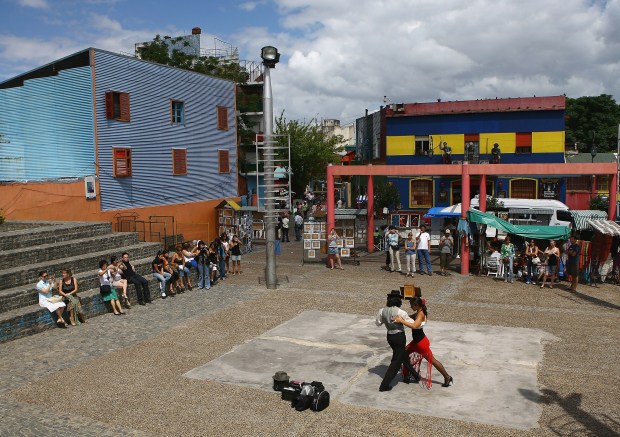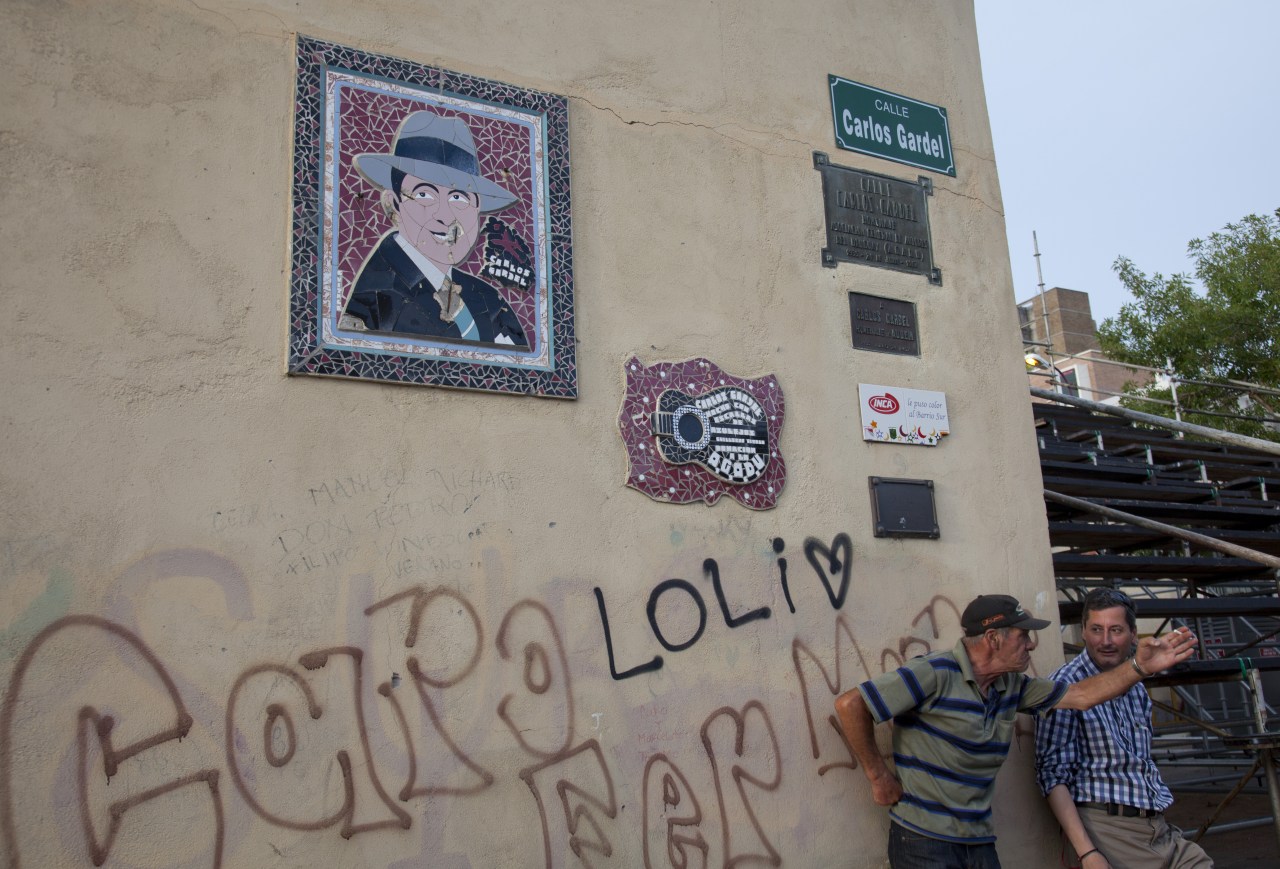Three different women tried to kill themselves when they heard the news. It was June 24, 1935, and Carlos Gardel, the greatest tango legend of all time, had died in a plane crash in Medellín, Colombia.
None of the women knew Gardel personally. One, a 19-year-old Puerto Rican who had wallpapered her bedroom with pictures of the tango icon, poisoned herself. Fortunately, she was saved by family members who rushed her to the hospital. Another, a Cuban girl, reportedly died in Havana of an apparent poisoning. A third young woman attempted suicide in New York City by poison as well.
Why did Gardel’s death inspire such a dramatic reaction? The headlines of the day reveal the significance of the tango legend in Latin America. “Movie Star and 16 Die in Plane Crash on Colombia Field,” reported The New York Times. Spanish-language headlines were more succinct: The tango star was a household name. “Murió Gardel” (Gardel is dead), the papers read.
Gardel wasn’t just a tango performer. He was the star of the golden age of tango, a symbol of glamour and romance; he was the face, the voice, the creative spirit, and the soul of a hugely popular art form. He was El Mago (the Wizard), El Zorzal (the Songbird), and El Rey del Tango (the King of Tango), among other affectionate nicknames bestowed upon him by an adoring public.
When Gardel’s coffin arrived by boat to Buenos Aires, tens of thousands of people were waiting. In the Argentine capital, tango radio went silent for an entire week in honor of the fallen star. Tributes poured in from France, where Gardel was allegedly born; growing up in Buenos Aires, he’d gone by the nickname “El Francesito” (the little French boy).

Across the Río de la Plata, hundreds of miles north of Montevideo in the small town of Tacuarembó, Uruguay, there was little fanfare in the wake of the tragedy. But there was grief, nonetheless: Locals believed—and still hold today—that Gardel was born in Tacuarembó, not Toulouse, France.
Indeed, there are two conflicting versions of the singer’s biography, sometimes causing tensions when it comes up in conversation between Argentines and Uruguayans. The discord cuts right to the heart of the relationship between the neighboring countries—one that wavers between friendship and sibling rivalry—and their shared connection to tango.
The most widely accepted story is that Gardel was born in France in 1890 to an unmarried woman, Berthe Gardès. She named the baby Charles Romuald Gardès, and in 1893 the pair set sail for Argentina. The young mother and son settled in Buenos Aires, where Gardel would spend his childhood. Later, in 1927, he purchased a home for his mother in the Abasto neighborhood, and he lived there with her until 1933. The neighborhood is famous for its historic marketplace. It’s also one of the city’s traditional tango districts. Murals of Gardel can be seen on doors and buildings in Abasto. There are milongas (tango clubs) throughout Abasto and the adjacent neighborhood, Almagro.
The Uruguayan theory doesn’t contradict the facts of Gardel’s childhood in Buenos Aires or those of his later life. There’s little to debate: The Abasto house is now a museum, El Museo Casa Carlos Gardel, which is open to the public. But many Uruguayans claim that Gardel was born in Tacuarembó in 1887, the son of a military figure who refused to acknowledge him. As the story goes, the boy was taken to live in Buenos Aires at age six, where he was raised by a French woman named Berthe Gardès.
There’s documentation that could prove the theory—sort of. When Gardel’s passport was rescued from the debris at the site of the fatal plane crash, it listed his place of birth as Tacuarembó.
Skeptics dismiss the passport’s relevance, suggesting that Gardel applied for his paperwork in neutral Uruguay to avoid being drafted into military service during World War I in his native France. Proponents of Gardel’s Uruguayan roots offer another explanation. “Until 1920, Gardel was an undocumented immigrant living in Argentina,” Martina Iñiguez, a Gardel biographer and researcher, told the BBC in 2013. “And that year, Uruguay issued amnesty so that everyone in that situation could register.”

Confusing matters further, the two sides of the debate over Gardel’s birthplace don’t fall neatly into national categories. One public supporter of the theory that Gardel was born in France is Jorge Ruffinelli, a literature professor at Stanford University and the author of Gardel’s Smile: Biography, Myth, and Fiction (2004). Ruffinelli happens to be Uruguayan. And Iñiguez, who has tirelessly defended the theory that Gardel was born in Tacuarembó? She’s Argentine.
What does it matter, an outsider might wonder, where Gardel spent his early childhood? It wasn’t until much later, in 1917, that he revolutionized tango with his first recorded song, “Mi Noche Triste” (“My Sad Night”), which sold 10,000 copies in Latin America. It wasn’t until the 1920s that his voice became popular on the radio and he started touring Europe and starring in films with Hollywood stars. The attempt to claim ownership over his narrative could be read, perhaps, as an attempt to assert ownership over tango itself.
Gardel didn’t invent tango, after all. Before he was born, tango—the musical form and the dance that developed alongside it—already thrived in the working-class neighborhoods of the port cities of Buenos Aires and Montevideo.
The tradition was born in the corner bars and brothels on both sides of the Río de la Plata, a wide river that serves as a natural boundary between the two countries. It’s worth noting that a political border didn’t always exist: The two countries were initially one. The United Provinces of the Río de la Plata—present-day Argentina, Uruguay, and part of Bolivia—won their independence from Spain in 1816. Uruguay approved its own constitution in 1830.
By that point in time, the countries’ shared cultural heritage was already established. Argentina and Uruguay had—and still have—plenty in common. Both countries are agricultural powerhouses. Both are major producers and consumers of meat. Both have important port cities that have accepted a steady stream of immigrants from around the world. And both nations have been shaped by a mix of that immigrant influx and the indigenous criollo (creole) culture, which is why you see people drinking maté tea out of gourds—an age-old tradition that dates back to the region’s original inhabitants—on both sides of the river.

Argentines and Uruguayans alike describe their relationship as a friendly sibling rivalry. Uruguayans talk about the exciting cultural scene of Buenos Aires, the excellent wines produced in Mendoza, and the diversity of Argentina’s landscape, from glaciers to waterfalls. Argentines, for their part, like to vacation on the beaches of their neighboring country, and they speak admiringly of the peaceful way of life and slow pace in Uruguay.
Factually speaking, though, Uruguay is only a fraction of the size of sprawling Argentina, with a fraction of the larger country’s natural resources and population. It’s understandable that Uruguayans want their share of the glory when it comes to tango history. People around the world think of Argentina as the birthplace of tango. And it is—but so is Uruguay.
On both sides of the Río de la Plata, there’s a push for DNA testing of Gardel’s remains, currently entombed at the Chacarita cemetery in Buenos Aires. That hasn’t happened yet. In the meantime Uruguay opened a Gardel museum in 2003 near Tacuarembó to receive the waves of curious tourists who show up wondering about the tango star’s birthplace. And, in 2004, Uruguay released a Gardel stamp that proudly defined the singer as the Tacuaremboense Inmortal (the Immortal Tacuaremboan).
Nearly nine decades after Gardel’s death, he remains an omnipresent figure. In Montevideo and Buenos Aires alike, his music plays in bars and cafés, in taxis and tango clubs. His handsome face, smiling out from beneath a jaunty fedora, appears everywhere from restaurant menus to street murals. He’s a legend and a pop-culture reference; he’s even worked his way into contemporary language. When someone excels at something, whether it be fútbol or grilling steaks on the backyard parrilla, Argentines and Uruguayans offer a classic compliment: Sos Gardel (“You’re Gardel”).
Does it even matter where El Rey was born? At the end of the day, tango isn’t Argentine or Uruguayan. It’s rioplatense, from the Río de la Plata, a nostalgic reminder of a time before the border between the two countries existed.
Cada día canta mejor (Every day he sings better), as the saying goes. Time marches on, but Gardel’s music is still the soundtrack to life in both Uruguay and Argentina. Gardel belongs to neither and to both. The King of Tango, like the tradition itself, is a symbol of a culture, not a country.